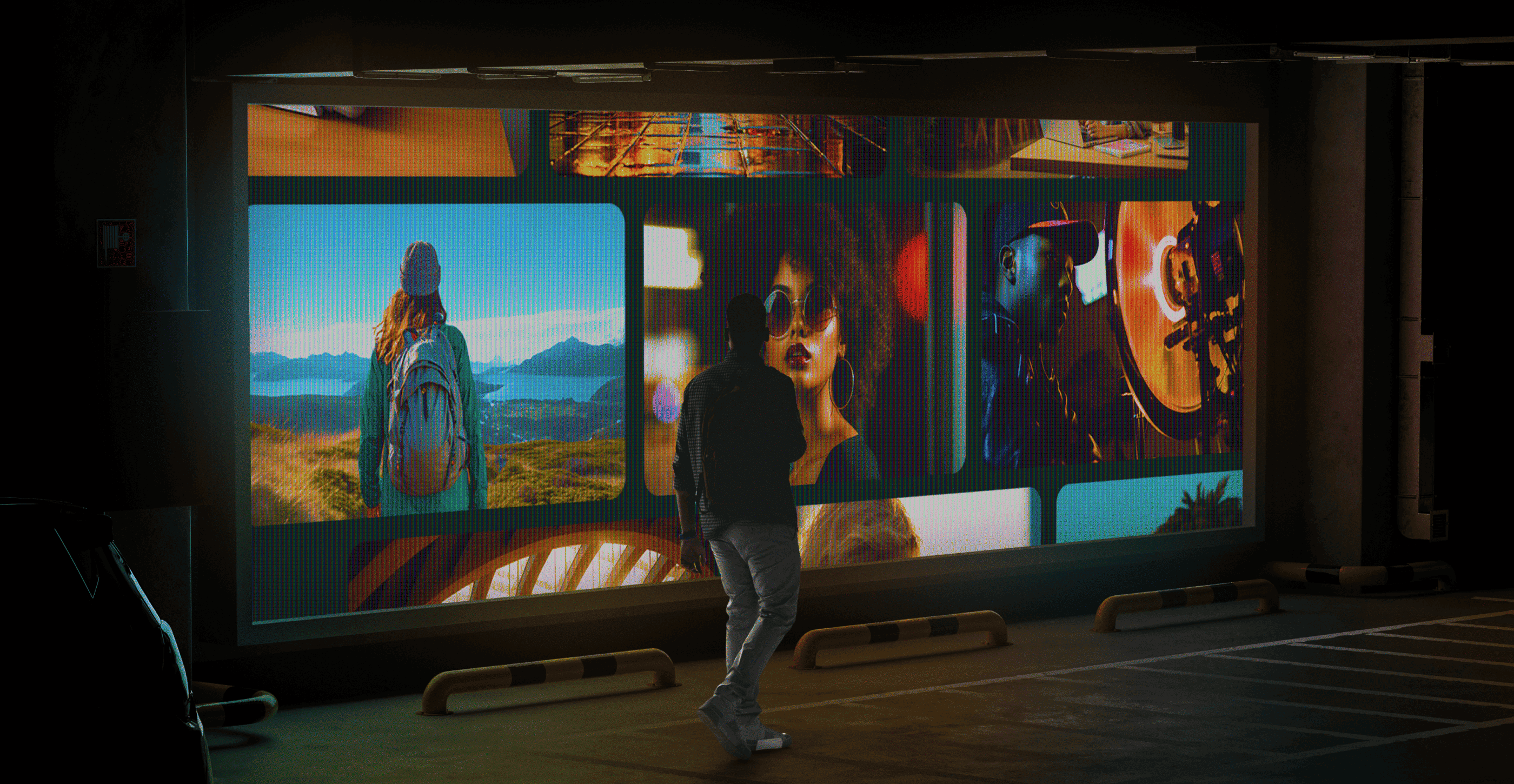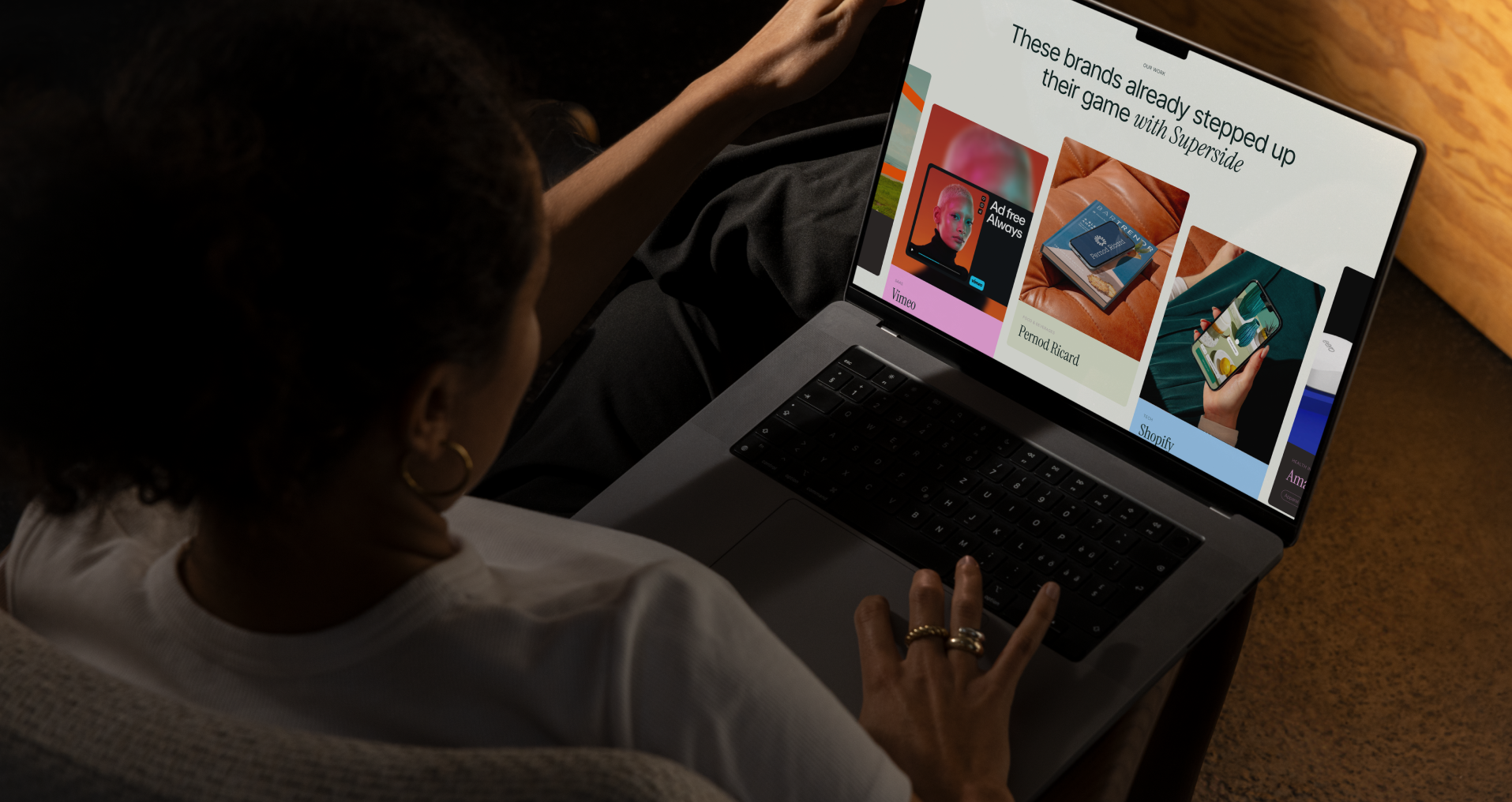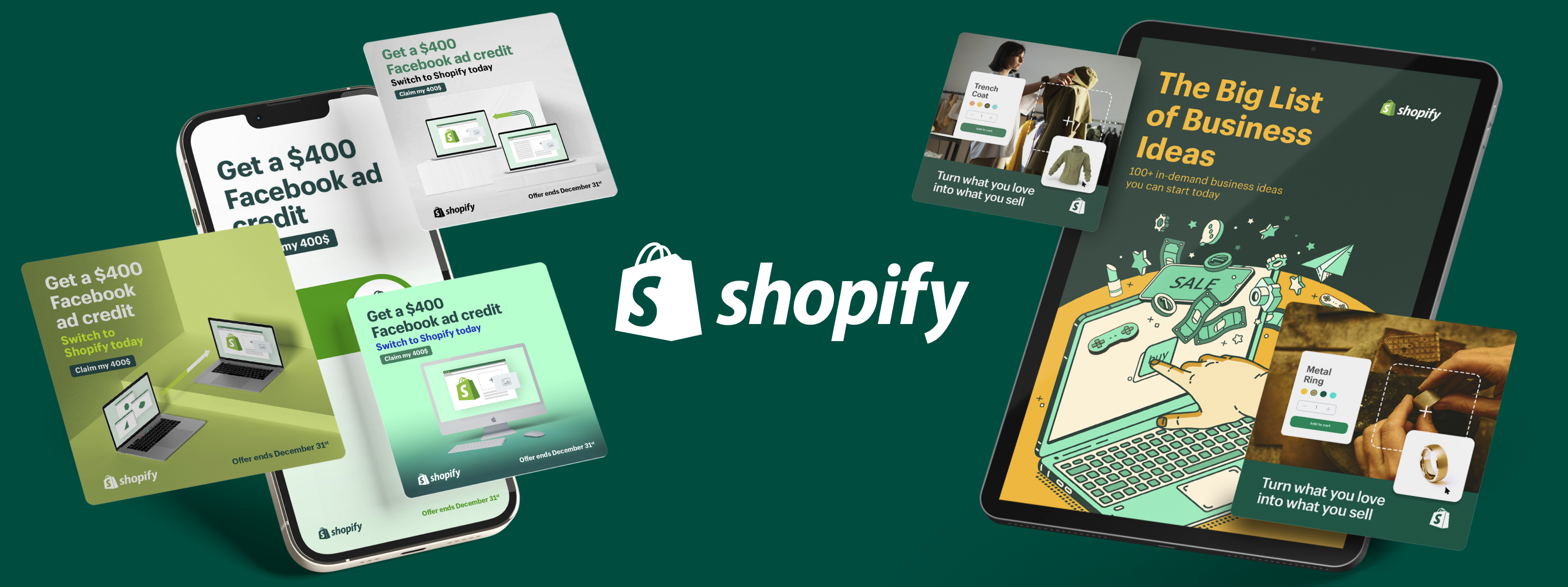11 Lessons From Marketing & Design Leaders on Fueling Growth Through Uncertainty


In late November, we were joined by the world’s top marketing and creative leaders to learn how businesses can make smart bets to confidently scale up when so many are scaling back. This takes proper planning – there's not much room for error when times are tough.
At our virtual Momentum Summit: Fueling Growth During Uncertain Times, over 3,000 creative and marketing attendees filled their tanks with the best advice from the people best suited to give it.
Whether you missed a session, missed the whole summit, or just plain blanked on the big lessons, here are the key takeaways from every session in the event.
Lesson #1: Successful Leaders Bet on Themselves First
“Comfort is a slow death. Sometimes, business partnerships don’t feel right or feel uncomfortable. This might be a good sign that’s where you should be.”
"Educate yourself. Learn as much as possible. That's how you grow."
Session speakers:
- Chris Do, Founder & CEO at The Futur
- Adam Morgan, Executive Creative Director at Adobe
Big takeaways:
- Personal development and education is the route to leadership. Technical knowledge can and should be picked up along the way, but a commitment to improving yourself and diversifying your expertise all but guarantees strong leadership.
- Seek out somewhat uncomfortable partnerships that will push you to grow and address your weaknesses and gaps.
- The best work comes from people who like what they do. Aligning yourself with work you enjoy ensures high output on any project.
Illustrated notes by Joyce Chou.
Lesson #2: Creative Leaders Who Want a Seat at the Table Need to Shift From Service to Strategy
“Design is not art. Art can make people ask questions, but it’s design that answers them. The space between the two is where the best creative happens.”
Session speakers:
- Aaron Poe, Creative Director at Zapier
- Danielle Giroux, Creative Director at Clio
Big takeaways:
- If design wants a seat at the table, it has to develop its “business brain”. Design has to communicate its ideas and needs with business impact in mind, or no one will listen to them.
- Creatives can get in their own way by emphasizing their personal processes and fulfillment over the goals of their organization. But balancing personal needs with business needs is necessary for stakeholders to see the value design brings.
- Digital asset management systems (DAMs) work wonders for systematizing normally cumbersome aspects of the creative process. They also allow teams outside design to access and “make” their own creative with the use of templates. DAMs can help bring everyone into the fold on design. Attendees had lots of questions about DAMs, and speakers couldn’t say enough about them.
A brand is more than a logo. Here are all the factors that make up your brand. (Credit: Danielle Giroux)
Lesson #3: Brands Need to Embrace Authenticity, Humor and Experimentation in 2023
“It’s about covering the blind spots. It’s about finding those partners who are able to connect the dots and get the work done.”
Session speakers:
- Brian Button, Creative Director at Instacart
- Shachar Aylon, Creative Leader ex Picsart and Lyft
Big takeaways:
- Put your dollars and neurons toward being funny and authentic in 2023. “Respectful irreverence” may be a winning strategy among all the doom and gloom of the last few years.
- Give your “oddballs” airtime. Maybe it’s a wild idea, maybe it’s a wild team member. We don’t realize that we’re often following our own internal templates for what constitutes good marketing and design. Don’t be afraid to throw out the template.
- The perfect design brief notes the necessary emotional content.
- Finding the right external partner for design is about ethos as much as it is practice. Find someone who gets your brand, not just someone who’ll do the job for cheap.
Lesson #4: Marketing Budgets Need to be Flexible and Account for Long-Term Bets
“You need to place bigger bets. Make room for stuff that is potentially transformative.”
Session speakers:
- Meghan Keaney Anderson, Head of Marketing at Jasper
- Tara Robertson, CMO at Bitly
- Kim Losey, CMO at Rapid Robotics
Big takeaways:
- Marketers can’t rely on short-term dependable, mathematical formulas for success—they run the risk of curtailing your long-term growth. Making a smart bet on long-term growth is necessary, even if it’s scary in the short term.
- Make flexibility core to your planning. Take what leadership gives you at the top, build some moonshots and experiments at the bottom. Meet in the middle to have a leadership discussion on what can be cut, and what smart investments you can make in the year that will yield results.
Like in a layer cake, your marketing strategy should be built on the strategy (layer) before it. Each consecutive layer should be informed by the layer beneath it. (Credit: Amrita Mathur)
Lesson #5: Smart Creative Teams Need to Consider "Strategic Creative Collaboration"
“I wanted to take my team from order-takers to sommeliers.”
Session speakers:
- James Gregson, Creative Director at LEGO
- Dmitry Shamis, Global Head of Creative at HubSpot
Big takeaways:
- Scale the roles of creative teams by shifting the lens from “services center” to “trusted advisors”.
- Creative teams need space now more than ever. Prioritize their capacity and give them room to do different things.
- Explore “strategic creative collaboration” as an alternative to 100% internal ownership.
Lesson #6: It's Time to Try New Things (and Video Should Be One)
“The buyer’s journey is messy. People poke around, explore and move between funnel stages. Just because you can’t fully measure it, doesn’t mean you shouldn’t invest in it.”
Session speakers:
- Nolan McCoy, Head of Video & Creative Content at Chili Piper
- Allie Decker, Co-founder & Head of Content at Omniscient Digital
- Pat Lynch, Director of Content at D2L
Big takeaways:
- The buyer’s journey is messier than we’d like to think it is. Experiment more with strategies you might not be able to fully measure.
- Center your content strategy on the knowledge of industry experts. Find your internal (sometimes, even external) thinkers and use those subject matter experts to inform your plan.
- Embrace video now. You can start with the phone in your pocket. You have skills you can lean on, so don’t overlook your existing resources.
- Fuel your marketing funnel by thoughtfully building processes that enable sales with the right content.
- Produce micro-content across channels (with an emphasis on short-form video).
- Consider experimenting with decentralized content marketing, empowering your team to lean into their individual specialties to amplify the brand message.
Lesson #7: Long-Term Thinking Can Define Your Success in Uncertain Times
“As marketers, we’re great at getting to urgent and important things—often at the expense of those important, but non-urgent things.”
Session speaker:
Big takeaways
- Smart marketing revolves around long-term thinking. Don’t focus myopically on metrics with short-term gain.
- Look to the Eisenhower Matrix to sort and fulfill your priorities. Have a look at the book Free to Focus. In that matrix, pay special attention to the important-but-not-urgent sector of the grid: brand optimization, customer surveys, social proof, testimonials and other "non-urgent" issues.
- Make yourself a media outlet that attracts other advertisers and influencers. A newsletter is one way to do this.
- Build a solid following, then make space for sponsorships and referrals.
The Eisenhower Matrix can help marketing teams decide on and prioritize tasks by urgency and importance. (Credit: Max Bidna who discovered it in the book Free to Focus.)
Lesson #8: You Need to Run Tests. Then Run Them Again (and Again)
“As marketers, we like to think we have a better eye than most when it comes to creative. But, testing shows the downfall of this assumption every day.”
Session speaker:
- Jess Cook, Head of Content at LASSO (ex Marpipe)
Big takeaways:
- We as marketers need to realize that we’re not as good at making predictions as we like to think. Assuming that we always know what we’re doing hurts our results.
- When it comes to testing a marketer’s intuition, you might as well flip a coin. Cook conducted a rigorous A/B test with marketers to evaluate the accuracy of their predictions, and marketers came up wrong more often than not. The inability to predict creative performance is universal across all marketing roles.
- There is no crystal ball, but there is a lot you can do. It comes down to testing your assets and campaigns again and again. And again.
You might not be as good at guessing an outcome as you think. From VPs to performance marketers, people struggle to guess how campaigns turn out. (Credit: Jess Cook)
Lesson #9: AI is Your Robot Assistant Helping You Scale
“If you aren’t using story to inform AI, you’re using it wrong.”
Session speaker:
- Ian Martins, Managing Partner, Bell Curve
Big takeaways:
- Scaling campaigns is not a media buying problem, it’s a creative problem.
- Building a sellable story using AI requires “layered” thinking. You’ll need to be strategic about how you input commands to the AI, so it’s best to build out a spreadsheet outlining personas, value propositions and hooks. Contextualize these for each funnel stage.
Lesson #10: Master the Art of Telling Your Brand's Story
“Positioning can’t be done in a vacuum, it can’t just be a ‘marketing thing.’ It has to be a CEO thing as well—maybe one of the top three things they should care about.”
Session speaker:
- Dave Gerhardt, Founder at Exit Five
Big takeaways:
- Make your story your strategy. If you don't have a story, there are tools that can help: Obviously Awesome, Story Brand and Founder Brand are popular options.
- In the simplest form, answer clearly and directly: Who is your product for? What does your product do? Why is it different/better?
- If you do have a story, but need to drive alignment, ask for 30 minutes to present to the exec team on the current story, and work with senior leaders to turn that story into a company strategy for 2023.
- If you can't get people on board with your story, it either means the story is wrong or the people you’re working with don’t have room in their strategy for good marketing (yikes).
Lesson #11: Take a Good Hard Look at the Interest Your Community Might Generate
“Be honest with yourself: Is there a community of people who would want to educate themselves [on your product/service]? If there are, these people can grow into extensions of your brand."
Session speaker:
- Meghan Keaney Anderson, Head of Marketing at Jasper
Big takeaways:
- Not every brand needs or will benefit from a community. To make the most of a community, be purposeful with its intention and honest about whether interest exists.
- There are communities of platform and communities of practice. Know which you fall into before starting your own.
- Find your brand advocates, and use them in your community.
Make Smart Bets
Though we’ve done our best, the lessons learned throughout the summit simply can’t be contained on a single page. We encourage you to poke through or revisit Momentum Summit: Fueling Growth During Uncertain Times when you can. The combined insights of these sessions are guaranteed to shift your mindset—and maybe even your strategy as you enter the year ahead.
If there’s one point that our marketing and creative leaders kept coming back to, it’s the idea of making smart bets rather than playing it 100% safe. While there’s a tendency to want to protect every dollar in the short term, this has never—and will never—position businesses for long-term growth. Focus on making decisions and finding creative partners whose ethos and practices scale your team.
You may also like these

7 top creative support solutions for teams and enterprises
There’s no denying that today’s marketing and creative teams are under more stress than ever. To deliver high-performing, top-quality assets at scale, many teams are getting fewer resources, smaller budgets and tighter deadlines.As an ever-increasing number of brands compete for audience attention, the demand for compelling content is getting higher—and essential for creative teams to meet.It’s no surprise then that in-house marketing and creative teams are turning to advanced creative support solutions to help enhance efficiency, streamline workflows and optimize production processes.From AI-powered design to cloud-based collaboration software and outsourced creative services, these solutions transform how teams work, allowing them to produce more assets faster without compromising quality.Our best advice to teams and enterprises on how to get this right? Make Superside your creative team’s creative team and free up your team to do their best work.
How to find creative partner agencies to boost 2025 strategy
Are your internal creatives battling to keep up as the demand for authentic, trustworthy content grows? For many brands, outsourcing creative makes sound financial sense. Plus, partnering with an experienced creative services team can bring fresh ideas and impressive scalability.80% of customers say that the experience a company provides is just as important as its products or services, meaning that driving great customer experiences is essential in 2025. Once again, creative partnerships pay dividends, as many creative agencies go well beyond KPIs to drive genuine cultural impact and build trust.Unlike traditional agencies, creative partner agencies also typically act as an extension of your team. Work with Superside, for example, and our talented designers will become your creative team’s creative team.
6 Social Media Design Trends Defining Engagement in 2025
In 2024, brands used engaging user-generated content (UGC) in their marketing strategies, with TikTok lookalike contests and the AI ‘90s yearbook challenge trend sparking significant social media engagement. Pepsi leaned into nostalgia for its rebrand, while Starface turned functional skincare into a fashion statement.In a content-saturated world, brands must keep up with social media graphic design trends to stand out and remain relevant. As converting followers into customers grows more challenging, creating distinctive, scroll-stopping content can help your brand cut through the noise.Collaborating with a fully managed team of creatives who understand the latest social media design trends is an excellent place to start.And who better to guide us through this year’s key trends than Superside’s Executive Creative Director, Kae Neskovic, and Juan Cistoldi, Creative Strategist.Let's dive in:






